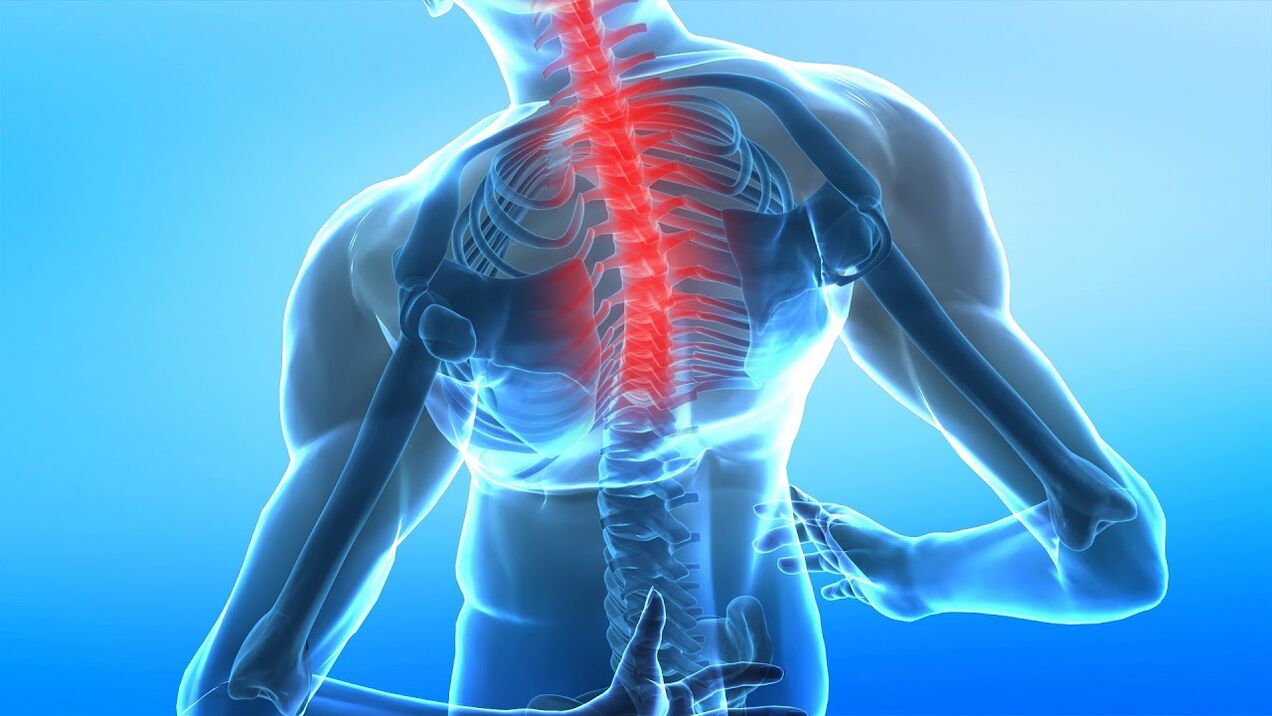Osteochondrosis of the spine is a complex disease that can affect the chest, lumbar and cervical spine. Consider the most common symptoms and characteristics of treating the disease at home.

Common symptoms of osteochondrosis of the spine
Osteochondrosis of the spine occurs in 60-70% of people over 40 years of age. Recently, it is not uncommon for young people in their 20s and 30s to suffer from osteochondrosis.
Depending on which part of the spine is affected by the disease, its clinical picture is determined. The loss of the cervical region is characterized by the appearance of the following symptoms:
- Spontaneous dizziness that increases when the head is turned (especially when moving suddenly);
- The headache is not relieved by the analgesic. Pain is often caused by motor activity in the neck region;
- Pain in the shoulder girdle and upper extremity belt;
- Impairment of vision: weakening, flicker in front of the eyes of "flies" and multicolored circles;
- Hearing impairment: ringing in the ears;
- Episodes of loss of consciousness;
- In a dream, snoring is the result of constant tension in the muscles of the neck;
- In more advanced cases, neurological symptoms occur: numbness of the tongue, changes in voice, etc.
Characteristic of chest osteochondrosis are:
- Pain in the chest, shoulder blades, provoked by physical activity, hypothermia. Pain most often occurs at night. Increased pain can also be triggered by deep breathing;
- Feeling of chest tightness and the appearance of stabbing pain in the spaces between the ribs (especially when changing posture and movement);
- Feeling of "climbing" on the chest and arms, sometimes - on the neck. Numbness and coldness in the limbs.
The clinical signs of osteochondrosis localized in the lumbar region are based on the following symptoms:
- Localized pain syndrome. It can be painful, permanent or intermittent in the form of "lumbago" by irradiating the right or left foot as well as the perineum, sacrum. Pain increases significantly during exercise and physical activity;
- Numbness and coldness in the lower extremities, decreased sensitivity in the legs;
- With the loss of the motor parts of the nerve chain, paresis and paralysis of the legs is possible;
- Dysfunction of organs of the urogenital system.
How to get rid of osteochondrosis at home without medication
Herbal and animal therapies are often used to treat osteochondrosis at home without medication. Preference is given to:
- bee and snake venom;
- badger fat;
- Pine essential oil;
- camphor alcohol, etc.
These substances can be used as ointments, compresses, rubs.
To relieve symptoms and reduce disease progression, the use of special orthopedic bedding is recommended: mattresses and pillows. In addition, special needle applicators can be used at home to improve blood circulation to the tissues and relax the muscles.
Proper nutrition plays an important role in the treatment of osteochondrosis. In order to improve the condition of cartilage and vertebrae, alcohol, coffee, tea, spicy foods, foods rich in extraction materials (fatty meat and fish, mushrooms) should be excluded from the diet;
Add foods and foods that help restore and maintain cartilage tissue integrity: lean meat and fish, dairy products.
You can also seek the help of a professional massage therapist at home to help relieve muscle tension in any part of your spine. You can also gently massage yourself. Self-massage includes caressing, rubbing, kneading.
How to treat osteochondrosis at home with medication
Medication for any disease, including osteochondrosis, should be prescribed by a qualified professional. Only a doctor should prescribe the appropriate treatment regimen, taking into account all possible contraindications to taking one or another group of drugs. The following classes of drugs are currently used to treat osteochondrosis:
- Non-steroidal anti-inflammatory drugs. They can be used in the form of powders, tablets for systemic use, and in the form of ointments and gels for topical use. The former have a more pronounced effect;
- Analgesics (painkillers);
- Muscle relaxants and antispasmodics. Elimination of muscle cramps and abnormal muscle tension;
- Preparations for improving microcirculation and rheology of the blood;
- Chondroprotectors. Ensure cartilage resistance to the effects of negative factors;
- Vitamins - mainly group B (B1, B6, B12). It actively influences metabolic processes in the nervous system;
- Antidepressants. Prevents the occurrence of disorders of psychosomatic origin.
How to cure osteochondrosis with home exercises
Orthopedics and rehabilitation physicians have developed special therapeutic practices for osteochondrosis of each spine. For a workout to be useful, you need to follow a few simple rules:
- Use specially designed complexes;
- Movements should not cause unpleasant and painful feelings;
- Movements should be smooth, precise, slow;
- You should do the exercises regularly. Even minimal time spent has incredible benefits for the spine.
- Practical therapeutic complexes should only be performed during the remission period of the disease.
In addition to the complexes of therapeutic practices, doctors strongly recommend that you always be physically active. Swimming and water aerobics available to everyone at any time of the year will relieve your back muscles perfectly.
Caution: Any treatment for osteochondrosis should be discussed with your doctor. Only then can you expect the maximum effect of therapy.























